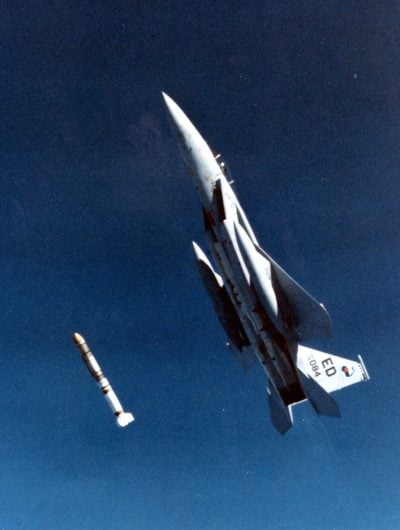The Militarization of Everything
by William J. Astore, Consortium News:

When Americans think of militarism, they may imagine jackbooted soldiers goose-stepping through the streets as flag-waving crowds exult; or, like our president, they may think of enormous parades featuring troops and missiles and tanks, with warplanes soaring overhead. Or nationalist dictators wearing military uniforms encrusted with medals, ribbons, and badges like so many barnacles on a sinking ship of state. (Was President Donald Trump only joking recently when he said he’d like to award himself a Medal of Honor?) And what they may also think is: that’s not us. That’s not America. After all, Lady Liberty used to welcome newcomers with a torch, not an AR-15. We don’t wall ourselves in while bombing others in distant parts of the world, right?
But militarism is more than thuggish dictators, predatory weaponry, and steely-eyed troops. There are softer forms of it that are no less significant than the “hard” ones. In fact, in a self-avowed democracy like the United States, such softer forms are often more effective because they seem so much less insidious, so much less dangerous. Even in the heartland of Trump’s famed base, most Americans continue to reject nakedly bellicose displays like phalanxes of tanks rolling down Pennsylvania Avenue.
But who can object to celebrating “hometown heroes” in uniform, as happens regularly at sports events of every sort in 21st-century America? Or polite and smiling military recruiters in schools? Or gung-ho war movies like the latest version of “Midway,” timed for Veterans Day weekend 2019 and marking America’s 1942 naval victory over Japan, when we were not only the good guys but the underdogs?

Recruiter with an attendee of the Military Exploration Workshop at Columbine High School in Littleton, Colorado, March 21, 2017. (DoD/Benjamin Pryer)
What do I mean by softer forms of militarism? I’m a football fan, so one recent Sunday afternoon found me watching an NFL game on CBS. People deplore violence in such games, and rightly so, given the number of injuries among the players, notably concussions that debilitate lives. But what about violent commercials during the game? In that one afternoon, I noted repetitive commercials for “SEAL Team,” “SWAT,” and “FBI,” all CBS shows from this quietly militarized American moment of ours. In other words, I was exposed to lots of guns, explosions, fisticuffs, and the like, but more than anything I was given glimpses of hard men (and a woman or two) in uniform who have the very answers we need and, like the Pentagon-supplied police in Ferguson, Missouri, in 2014, are armed to the teeth. (“Models with guns,” my wife calls them.)
Got a situation in Nowhere-stan? Send in the Navy SEALs. Got a murderer on the loose? Send in the SWAT team. With their superior weaponry and can-do spirit, Special Forces of every sort are sure to win the day (except, of course, when they don’t, as in America’s current series of never-ending wars in distant lands).
And it hardly ends with those three shows. Consider, for example, this century’s update of “Magnum P.I.,” a CBS show featuring a kickass private investigator. In the original “Magnum P.I.” that I watched as a teenager, Tom Selleck played the character with an easy charm. Magnum’s military background in Vietnam was acknowledged but not hyped. Unsurprisingly, today’s Magnum is proudly billed as an ex-Navy SEAL.
Cop and military shows are nothing new on American TV, but never have I seen so many of them, new and old, and so well-armed. On CBS alone you can add to the mix “Hawaii Five-O” (yet more models with guns updated and up-armed from my youthful years), the three “NCIS” (Naval Criminal Investigative Service) shows, and “Blue Bloods” (ironically starring a more grizzled and less charming Tom Selleck) — and who knows what I haven’t noticed? While today’s cop/military shows feature far more diversity with respect to gender, ethnicity, and race compared to hoary classics like “Dragnet,” they also feature far more gunplay and other forms of bloody violence.
Look, as a veteran, I have nothing against realistic shows on the military. Coming from a family of first responders — I count four firefighters and two police officers in my immediate family — I loved shows like “Adam-12” and “Emergency!” in my youth. What I’m against is the strange militarization of everything, including, for instance, the idea, distinctly of our moment, that first responders need their very own version of the American flag to mark their service. Perhaps you’ve seen those thin blue line flags, sometimes augmented with a red line for firefighters. As a military veteran, my gut tells me that there should only be one American flag and it should be good enough for all Americans. Think of the proliferation of flags as another soft type of up-armoring (this time of patriotism).
Speaking of which, whatever happened to “Dragnet’s” Sergeant Joe Friday, on the beat, serving his fellow citizens, and pursuing law enforcement as a calling? He didn’t need a thin blue line battle flag. And in the rare times when he wielded a gun, it was .38 Special. Today’s version of Joe looks a lot more like G.I. Joe, decked out in body armor and carrying an assault rifle as he exits a tank-like vehicle, maybe even a surplus MRAP from America’s failed imperial wars.

U.S. Marines assist in the filming “SEAL Team” on Marine Corps Base Camp Pendleton, Calif., Jan. 14, 2019. Camp Pendleton has been used as a filming site by a number of shows and movies in order to replicate the realism of the military services. (U.S. Marine Corps/Joseph Prado)
Militarism in the USA
Besides TV shows, movies, and commercials, there are many signs of the increasing embrace of militarized values and attitudes in this country. The result: the acceptance of a military in places where it shouldn’t be, one that’s over-celebrated, over-hyped, and given far too much money and cultural authority, while becoming virtually immune to serious criticism.
Let me offer just nine signs of this that would have been so much less conceivable when I was a young boy watching reruns of “Dragnet”:
- Roughly two-thirds of the federal government’s discretionary budget for 2020 will, unbelievably enough, be devoted to the Pentagon and related military functions, with each year’s “defense” budget coming ever closer to a trillion dollars. Such colossal sums are rarely debated in Congress; indeed, they enjoy wide bipartisan support.
- The U.S. military remains the most trusted institution in our society, so say 74 percent of Americans surveyed in a Gallup poll. No other institution even comes close, certainly not the presidency (37 percent) or Congress (which recently rose to a monumental 25 percent on an impeachment high). Yet that same military has produced disasters or quagmires in Afghanistan, Iraq, Libya, Syria, Somalia, and elsewhere. Various “surges” have repeatedly failed. The Pentagon itself can’t even pass an audit. Why so much trust?
- A state of permanent war is considered America’s new normal. Wars are now automatically treated as multi-generational with little concern for how permawar might degrade our democracy. Anti-war protesters are rare enough to be lone voices crying in the wilderness.
- America’s generals continue to be treated, without the slightest irony, as “the adults in the room.” Sages like former Secretary of Defense James Mattis (cited glowingly in the recent debate among 12 Democratic presidential hopefuls) will save America from unskilled and tempestuous politicians like one Donald J. Trump. In the 2016 presidential race, it seemed that neither candidate could run without being endorsed by a screaming general (Michael Flynn for Trump; John Allen for Clinton).

General James Mattis on MSNBC. (Screen shot)
The media routinely embraces retired U.S. military officers and uses them as talking heads to explain and promote military action to the American people. Simultaneously, when the military goes to war, civilian journalists are “embedded” within those forces and so are dependent on them in every way. The result tends to be a cheerleading media that supports the military in the name of patriotism — as well as higher ratings and corporate profits.
Read More @ ConsortiumNews.com
Loading...



